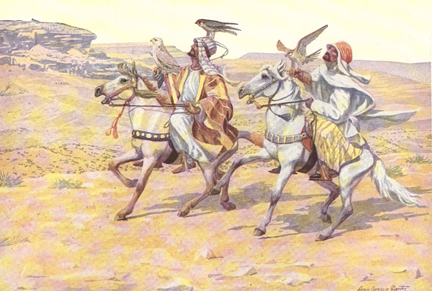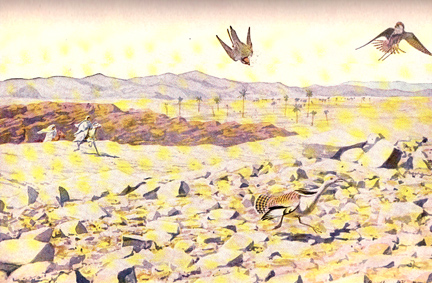
“The Start: Arabs Setting out with Falcons to Course Gazelles. It is difficult to tell just when hawking began. The Arabs, perhaps as early as any other people, trained certain hawks to course the swift desert game. In coursing gazelles, three, five or more hawks are used, and the aid of dogs is required for the actual kill, the hawks worrying and bewildering the game until the dogs can catch up. These hawks are always fed from the eye-sockets of a calf’s head, and naturally turn to this spot in their living quarry. There is great danger that the hawks may be impaled on the horns of the gazelle.
In leafing through a vintage National Geographic Magazine from December, 1920, I came across an article entitled “Falconry, the Sport of Kings” by Louis Agassiz Fuertes, who also drew the paintings included with his text. Falconry, as Fuertes writes, was far more than the sport of kings: “A vast impetus was given to falconry by the returning crusaders, who had become familiar with the methods of the Orient and had brought with them both falcons and trainers. War lords never left their courts without their falconers and a cadge of hawks, to be flown at anything that might be deemed worthy.” The author noted that hunting with falcons was greatly curtailed after the introduction of guns, but continued as a sport. But he wrote just after the Great War, now known as World War I, had ended, and hoped that some of the “less serious pursuits” like falconry would be revived. Although his article does not discuss the falconry of the Middle East in any detail, it does provide two illustrations, which I provide above and below.

This is one of the most thrilling of all uses of the falcon, for the chase often continues for many miles over the rough desert, where only the stanchest horse can follow. The size and stamina of the quarry, combined with the habit of fleet running instead of flying, make it hard as well as dangerous for the little lanner falcon to kill, as there is so little space to turn away from the ground after the stroke.